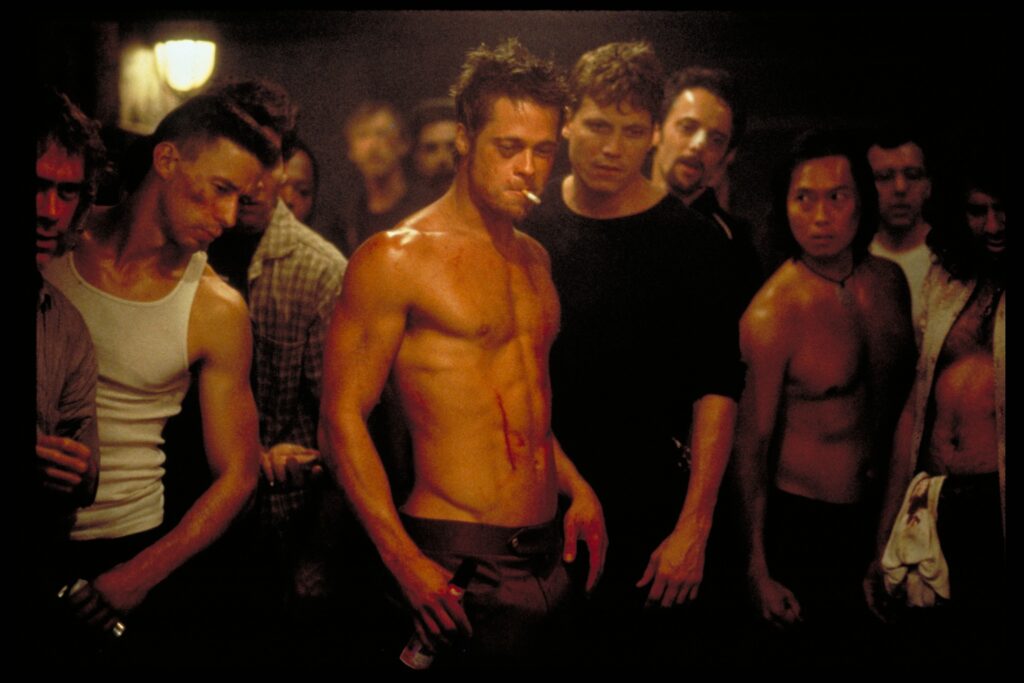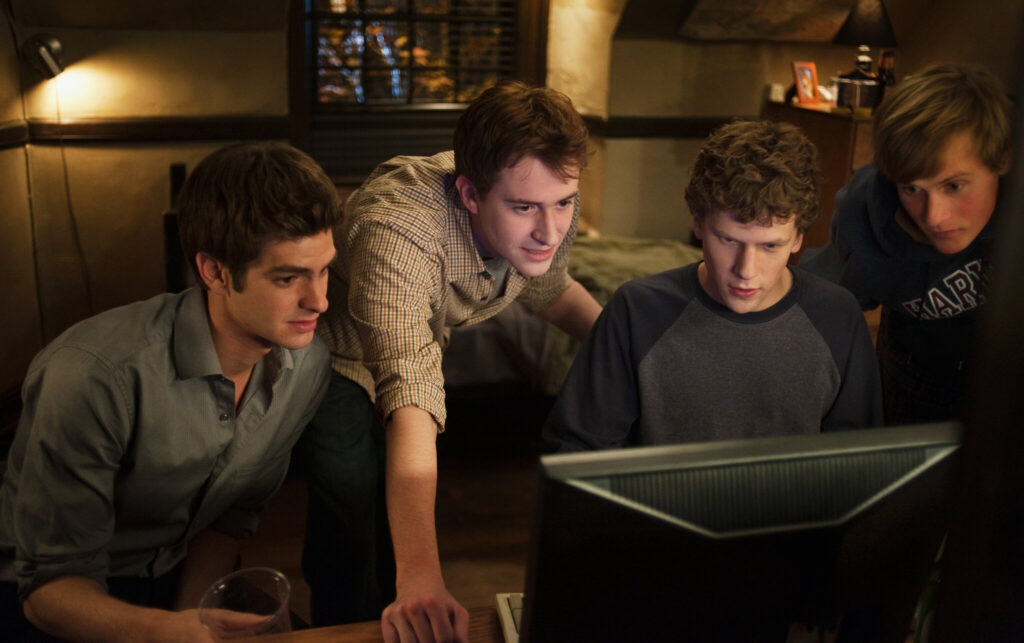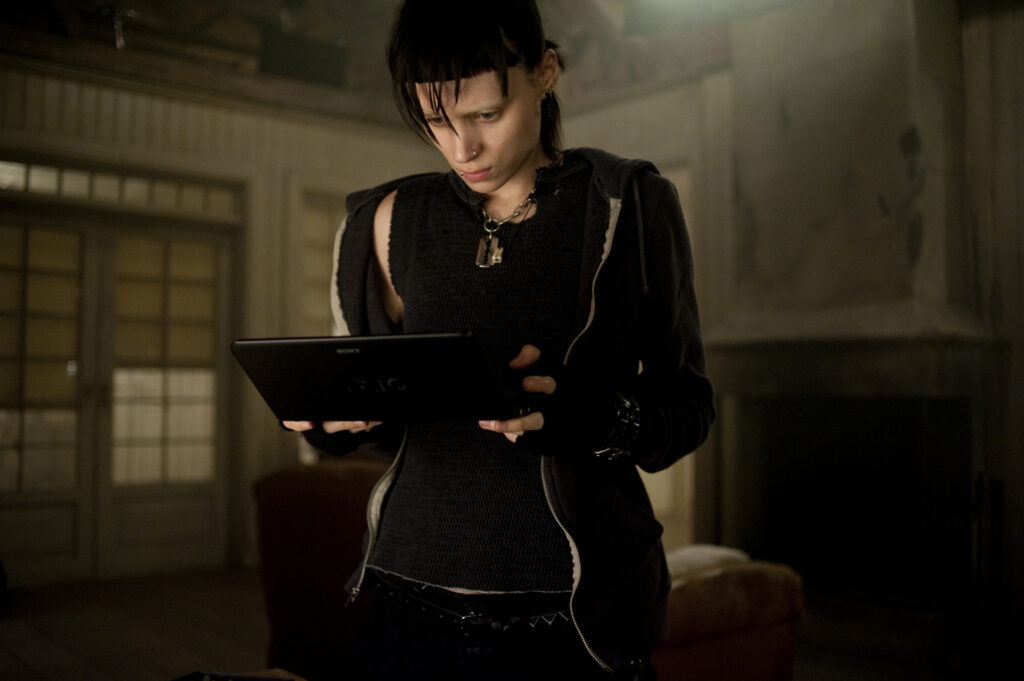Here, the author embarks on a journey through the top 5 book-to-screen adaptations by the famous director, David Fincher, that have not only breathed life into beloved novels but also left an enduring impact on the realms of film and storytelling.
David Fincher, a name synonymous with visionary filmmaking, has left an indelible mark on the world of cinema. With an uncanny ability to transform gripping narratives from the page to the screen, he has gifted us some of the most captivating and thought-provoking book-to-screen adaptations.
Each film on this list is a testament to Fincher’s mastery in dissecting the human condition, unravelling the complexities of identity, ambition, obsession, and empowerment. From the mind-bending world of Fight Club to the enigmatic pursuit of the truth and justice in Zodiac – each adaptation showcases his cinematic wizardry. With his latest book-to-screen adaptation, The Killer (2023), Fincher invites us to explore the darkest corners of the human psyche, prompting introspection and sparking conversations about the non-sense world we live in.
So, grab your popcorn, dim the lights, and join us on a cinematic odyssey through the top 5 book-to-screen adaptations by David Fincher, where every frame is a work of art, every word is a revelation and every moment is an invitation to delve into the mysteries of life and storytelling.
Fight Club (1999)

The film most people first recall when the director’s name – David Fincher – is thrown around. In this adaptation of Chuck Palahniuk’s Fight Club, Fincher leads us into a gritty world of bare-knuckle brawls and societal disillusionment. He skillfully delves into the psyche of the unnamed narrator and his alter ego, Tyler Durden. The film, like its literary counterpart, has become a compelling exploration of identity crisis and societal dissatisfaction, and a scathing critique of consumer culture.
Theme: Identity and Dissatisfaction
At its core, Fight Club is an existential journey, mirroring the identity crises faced by many in the modern world. Both the novel and the film peel away the layers of the protagonist’s psyche, revealing a profound sense of discontentment with his mundane existence. The unnamed narrator, brilliantly portrayed by Edward Norton, embodies the disconnection and disillusionment felt by Generation X, a generation caught in the crossroads of tradition and rapid societal change. Fincher’s lens penetrates the very soul of the narrator, capturing his existential angst with raw intensity.
Cinematic Technique: Visual Distortion and Identity
Through split-screen sequences and rapid editing, the film captures the disorienting experience of the protagonist’s fragmented psyche. These techniques serve to immerse the audience in the character’s internal struggle, blurring the lines between reality and illusion. As the story progresses, the visual distortions intensify, mirroring the narrator’s descent into madness and his increasing inability to distinguish between his true self and the persona of Tyler Durden. The dimly lit basements and grimy fight club settings become metaphors for the shadowy corners of the narrator’s mind. The juxtaposition of these settings with the sterile, consumerism-driven world above ground underscores the film’s commentary on societal values.
Cultural and Societal Impact: Counterculture and Dissent
Upon its release, Fight Club emerged as a cultural touchstone for Generation X, a generation grappling with the disillusionment of post-industrial society. Through the character of Tyler Durden, Fight Club becomes a rallying cry for counterculture, challenging the materialism and conformity that define modern existence. The fight club itself, with its anarchic ethos and rejection of societal norms, embodies the spirit of dissent that reverberates throughout the film. Its influence is evident in the emergence of real-life fight clubs, where individuals sought an outlet for their frustrations and a sense of belonging outside societal constraints.
Zodiac (2007)

In the labyrinthine corridors of crime and obsession, David Fincher found his canvas in Robert Graysmith’s Zodiac, a chilling true-crime saga exploring the hunt for the elusive Zodiac Killer in 1970s San Francisco. Through meticulous storytelling and an unflinching gaze into the abyss of human fear, Fincher masterfully navigates the complexities of obsession and the unseen evil that lurks in the shadows, crafting a film that resonates with tension, dread, and intrigue.
Theme: Obsession and Fear in the Pursuit of the Zodiac Killer
Zodiac delves into the psyche of those consumed by obsession, particularly the journalists and investigators entangled in the pursuit of the Zodiac Killer. The film brings the words of the book to life by painting a haunting portrait of relentless determination, blurring the lines between professional duty and personal obsession. Graysmith, played with depth by Jake Gyllenhaal, becomes the embodiment of this fixation, sacrificing his sanity and stability in his quest for the truth. Fincher’s direction immerses the audience in the suffocating atmosphere of paranoia, mirroring the fear that grips an entire city under the Zodiac’s ominous shadow.
Cinematic Technique: Cinematic Realism and Suspense
Fincher’s attention to detail in Zodiac is nothing short of extraordinary. Every costume, set design, and prop is meticulously crafted to mirror the aesthetics of the 1970s. The film becomes a visual time machine, transporting audiences to the gritty, neon-soaked streets of San Francisco, capturing the essence of the era. The deliberate pacing of the film allows tension to simmer, creating an atmosphere of perpetual unease. Fincher employs slow zooms to focus the audience’s attention, heightening the sense of impending dread. The strategic use of silence becomes a tool for suspense, amplifying the impact of pivotal moments and emphasising the weight of the characters’ discoveries. Through these techniques, Fincher crafts a film where the very air crackles with tension, drawing audiences into a world where fear is tangible, and the unknown becomes a relentless adversary.
Cultural and Societal Impact: True Crime Culture and Journalism Ethics
Zodiac emerges as a seminal work in the true crime genre, inspiring a new wave of fascination with unsolved mysteries and criminal investigations. The Zodiac Killer case serves as a benchmark for true crime storytelling, setting the bar for historical accuracy and narrative depth. The film’s impact also extends beyond the screen, prompting renewed public interest in the case and inspiring countless discussions, theories, and amateur investigations. It critically examines the ethical dilemmas faced by journalists and editors, particularly in the context of reporting on an ongoing investigation. The characters grapple with the balance between truth and sensationalism, raising poignant questions about journalistic integrity and the impact of media coverage on public perception.
Also Read: The 6 Best Mystery/Thriller Books by Keigo Higashino
The Social Network (2010)

In the digital tapestry of The Social Network, director David Fincher perfectly encapsulated the rapid rise of Facebook and the subsequent legal battles that ensued among its founders. Aaron Sorkin wrote the screenplay of the movie based on the book, The Accidental Billionaires: The Founding of Facebook, a Tale of Sex, Money, Genius, and Betrayal (2009) book by Ben Mezrich.
Theme: Ambition and Betrayal in the Digital Age
At its heart, The Social Network (and much of its source material) is a modern-day Shakespearean drama, delving into the complexities of ambition and friendship against the backdrop of technological innovation. The book chronicles the journey of Mark Zuckerberg, brilliantly portrayed on screen by Jesse Eisenberg, as he navigates the treacherous waters of ambition and moral ambiguity. It successfully captures the essence of entrepreneurial zeal, portraying Zuckerberg’s relentless pursuit of success and recognition. The film simultaneously delves into the themes of friendship and loyalty, highlighting the betrayal that often accompanies ambition. Zuckerberg’s journey becomes a cautionary tale, a reflection of the ethical dilemmas faced by innovators in the digital age.
Cinematic Technique: Dialogue and Pacing
Sorkin’s dialogue-writing in the film becomes a character in itself, revealing layers of ambition, wit, and vulnerability. The characters engage in verbal sparring matches, each line dripping with subtext and intent. Fincher’s direction further enhances the impact of Sorkin’s words, allowing the dialogue to flow seamlessly, punctuated by visual cues that emphasise the emotional undercurrents. The synergy between Sorkin’s dialogue and Fincher’s direction creates a rhythm that mirrors the heartbeat of Silicon Valley, where every word and decision holds the potential to shape the future. Fincher also employs long takes and tracking shots to immerse the audience in the high-stakes world of entrepreneurship and legal battles. These extended sequences create a sense of continuity, allowing scenes to unfold organically in real-time. The camera becomes a silent observer, capturing the characters’ interactions with unflinching precision. The use of tracking shots, particularly during the deposition scenes, enhances the tension, emphasising the gravity of the legal battles faced by the characters.
Cultural and Societal Impact: Digital Revolution and Ethical Dilemmas
The movie serves as a cultural artefact, chronicling the birth of Facebook and its profound impact on human connections. The film captures the spirit of innovation that defined the early days of social media, portraying Zuckerberg’s vision as a catalyst for a digital revolution. As Facebook evolves from a college experiment to a global phenomenon, the film explores the transformative power of social media in shaping the way people communicate, connect, and share information. It becomes a reflection of the profound changes in interpersonal relationships brought about by the rise of online platforms, highlighting the dichotomy between virtual connectivity and genuine human connection. It also probes the murky waters of intellectual property, friendship, and social ethics, forcing audiences to confront moral dilemmas faced by innovators. The legal battles, particularly between Zuckerberg and his former associates, become a battleground for conflicting values, where loyalty clashes with ambition and personal integrity is weighed against professional success. These ethical quandaries become a societal mirror, prompting discussions about the fine line between innovation and exploitation, friendship and betrayal, and the ethical responsibilities of those who shape the digital landscape.
The Girl with the Dragon Tattoo (2011)

In the enigmatic world of Stieg Larsson’s The Girl with the Dragon Tattoo, director David Fincher discovered a narrative that transcends the conventions of the crime thriller genre. Through the complex characters of Lisbeth Salander and Mikael Blomkvist, Larsson crafts a tale that explores themes of empowerment, mystery, and the intricate layers of feminism.
Theme: Empowerment and Feminism
At the heart of the story lies Lisbeth Salander, a character who defies societal norms and challenges traditional gender roles, emerging as a feminist icon who embodies the strength and resilience of women refusing to be confined by societal expectations. Her unmatched hacking skills, intelligence, and unapologetic attitude make her a beacon of empowerment, reshaping the representation of female protagonists in popular cinema. Her narrative arc becomes a catalyst for broader societal discussions on violence against women, gender equality, and empowerment, shedding light on the darkness that often shrouds victims of abuse. Her pursuit of justice prompts conversations about the importance of supporting survivors and dismantling systems of oppression. Through Lisbeth’s story, The Girl with the Dragon Tattoo becomes a powerful vehicle for advocacy, challenging societal norms and advocating for a world where every individual is treated with dignity and respect.
Cinematic Technique: Character Visualisation and Symbolism
Rooney Mara’s transformation into Lisbeth Salander is a testament to the power of visual storytelling. The character’s visual representation – from her distinctive piercings and tattoos to her unconventional wardrobe – becomes a visual metaphor for her rejection of societal norms. Mara’s meticulous attention to Lisbeth’s body language and emotional nuances imbues the character with depth and authenticity. Every piercing, every tattoo, and every glance becomes a reflection of Lisbeth’s identity, underscoring her agency and autonomy. Through Mara’s performance, Lisbeth Salander ceases to be a fictional character; she becomes a living, breathing embodiment of empowerment and defiance. The enigmatic dragon tattoo on Lisbeth’s back becomes a visual metaphor for her inner strength and resilience, a mythical creature embodying her fiery determination. The juxtaposition of darkness and light, particularly in scenes depicting Lisbeth’s hacking endeavours, becomes a visual representation of her dual nature—shadowy and mysterious, yet illuminated by her intellect and bravery. These visual elements serve as a canvas, painting a portrait of empowerment and transformation, where strength emerges from the depths of vulnerability.
Cultural and Societal Impact: Empowerment and Gender Dynamics
The Girl with the Dragon Tattoo marks a paradigm shift in gender dynamics within the media landscape, extending beyond the screen and influencing the portrayal of female characters in subsequent movies and television shows. Fincher explores the many ideas around abuse, justice, and empowerment, thus mirroring societal realities and inspiring conversations about the importance of survivor-driven narratives and the need for a more compassionate approach to supporting those affected by abuse. The Girl with the Dragon Tattoo truly challenges the status quo in the pursuit of a more just and empowered world.
Gone Girl (2014)

One of the most amazing yet shocking twists ever seen in movies – Fincher plays his audience like a fiddle emotionally – creating one of the best examples of ‘a tale of two halves’. Within the labyrinthine pages of Gillian Flynn’s Gone Girl, Fincher discovered a chilling narrative and the film, like the book, became a psychological puzzle, exploring the themes of deception, media manipulation, and the darker facets of marriage.
Theme: Deception and Media Influence
At its core, Gone Girl delves into the complexities of marriage, unravelling the layers of deception that shroud the relationship between Nick and Amy Dunne. Flynn’s narrative is a harrowing exploration of manipulation, secrets, and the corrosive effect of lies on human connections. The narrative becomes a reflection of contemporary marriages, mirroring the tensions and deceptions that often lie beneath the façade of domesticity. Fincher’s direction of the protagonists amplifies the film’s tension, capturing the subtle shifts in power dynamics and emotional landscapes within the marriage. Through meticulous pacing and nuanced performances, he crafts a narrative that keeps audiences on the edge of their seats, questioning the authenticity of every interaction.
Cinematic Technique: Lighting and Atmosphere
In this film, lighting becomes a pivotal element, casting shadows that mirror the darkness within the characters’ hearts. Fincher employs chiaroscuro techniques, juxtaposing light and shadow to create a visual representation of the moral ambiguity and duplicity that permeates the story. The interplay of light and darkness becomes a metaphor for the characters’ dualities, underscoring the film’s exploration of hidden motives and obscured truths. The dimly lit interiors and stark contrasts enhance the sense of foreboding, enveloping the narrative in an atmosphere of palpable tension. Besides, subtle shifts in facial expressions, the placement of props, and the framing of scenes become tools of deception, blurring the line between reality and facade.
Cultural and Societal Impact: Media Manipulation and Gender Dynamics
The film forces audiences to confront the power of the media in shaping narratives and public opinion, raising questions about ethics, responsibility, and the blurred lines between news and entertainment. Through the characters of Nick and Amy, Gone Girl highlights the media’s tendency to portray individuals as either heroes or villains, with little room for nuance. The consequences of this sensationalism reverberate far beyond the confines of the screen, prompting discussions about the ethics of journalism and the impact of media manipulation on individuals’ lives. It also sparks broader conversations about gender dynamics and societal expectations within relationships, especially with respect to Amy Dunne’s character, which challenges traditional notions of femininity and victimhood, subverting expectations and defying categorization. The film becomes a prism through which discussions about agency, manipulation, and societal pressures are refracted.

